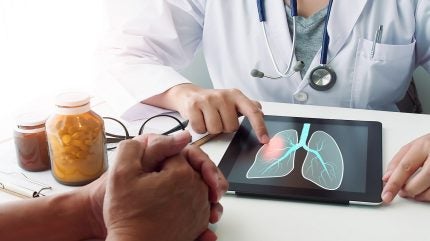
AccuStem Sciences is set to launch the microRNA Signature Classifier (MSC) blood test for the US lung cancer screening programmes.
The company aims to broaden the test’s use to the 15 million individuals who are at risk and those who are eligible for lung cancer screening each year in the country.
Last month, AccuStem acquired the licence for the test from researchers at the Istituto Nazionale Tumori in Italy.
Stated to be the most widespread cancer diagnosed worldwide, lung cancer accounts for one in five cancer mortalities due to late detection.
Low-dose computed tomography (LDCT) scanning, recommended after the National Lung Screening Trial showed a 20% reduction in lung cancer death among smokers, is approved in the US for individuals meeting specific age and smoking history criteria.
The company noted that despite LDCT’s effectiveness, false positive outcomes remain a challenge.
To address this, researchers Gabriella Sozzi, Ugo Pastorino and Mattia Boeri developed the MSC test, which analyses microRNAs in blood samples.
The test has undergone assessment in more than 5,000 individuals across various prospective trials.
One trial revealed that the combination of LDCT and MSC tests reduced the false positive rate from 19.4% to 3.7%.
The BioMILD trial further confirmed the test’s efficacy and accuracy when used alongside LDCT.
The research has shown that the test can stratify subjects with lung nodules, potentially saving healthcare expenses by minimising needless lung biopsies.
The MSC test is currently part of the RISP trial, and the company is on track to commercialise it in the US by next year.
AccuStem Sciences CEO Wendy Blosser said: “We see a large opportunity for MSC to meaningfully impact the care and outcomes for the 1.6 million patients diagnosed each year with lung nodules in the US.
“Additionally, we plan to expand the use of the test to all patients at risk of lung cancer. This would place MSC in front of LDCT screening and could identify those patients most likely to benefit from imaging, impacting as many as 15 million US patients annually.”


